Middleton Place is described as America’s oldest landscaped garden. Laid out in 1741 with romantic additions dating from the 19th and 20th century, it is a fascinating example of international style with a southern accent.
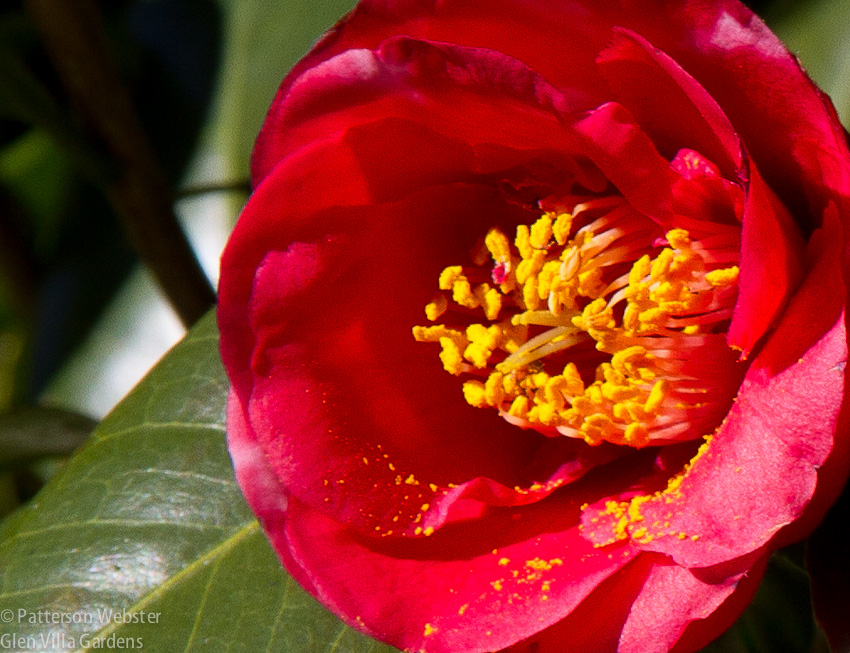
Camellias are now a mark of southern gardens. They were introduced to America in 1786, at Middleton Place.
A bit of history:
First settled in the late 17th century, Middleton Place was acquired by Henry Middleton through marriage. It was the family seat of four successive generations of Middletons who played important roles in American history.
Henry Middleton served as president of the First Continental Congress. After his wife’s death, Henry gave the property to his son Arthur, who subsequently signed the Declaration of Independence. At the height of the Revolutionary War, British troops ransacked Middleton Place, beheading many of the statues and looting the plantation’s artwork and furniture. Arthur was captured and imprisoned until 1781. In 1783, the treaty eliminating British troops from the Southern colonies was signed at Middleton.
The second Henry Middleton was a Governor of South Carolina and Minister to Russia from 1820–1830. His son Williams signed the Ordinance of Succession in 1860, five years before the Civil War brought an end to the prosperity of Middleton Place.
In 1972 Middleton Place was declared a National Historic Landmark.
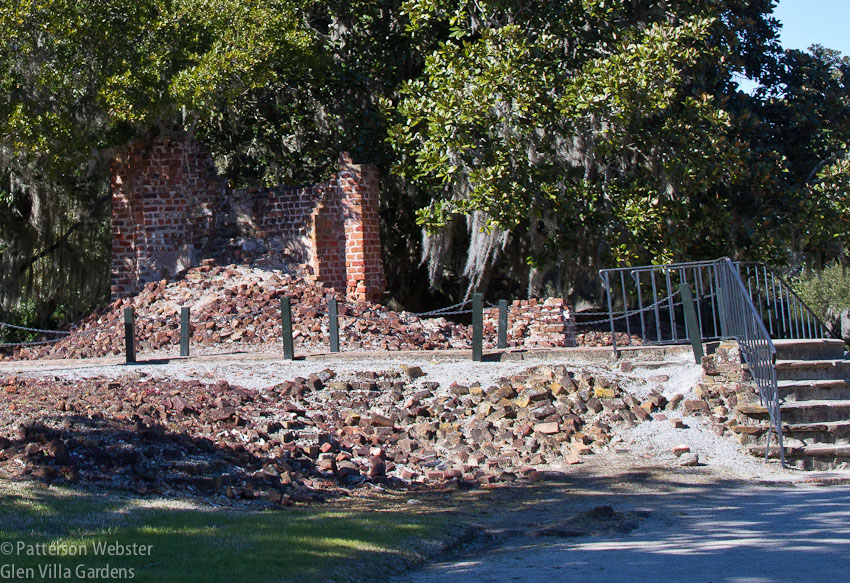
The original house, built c. 1705, was burned by Union troops in 1865 and leveled by an earthquake in 1886. A brick walk marks the centre hall of the the residence and the central axis of the garden.
The Gardens
According to Wikipedia, Henry Middleton laid out the gardens with the help of an English gardener named Simms, of whom little is known. The inspiration for their design came not from examples of English gardens that Middleton may have seen but from an engraved plan in the 1712 translation of a French text on gardening, The Theory and Practice of Gardening, by Dezaillier d’Argenville. The full title of this popular book needs to be noted:
Whew.
The design reflects the principles that were in vogue in the early 1700s, thanks to André Le Nôtre, the designer of Vaux-le-Vicomte, Versailles and many other French gardens. Geometry, symmetry, balance, vistas and focal points — all these elements are found in the gardens at Middleton Place.

This map shows the layout of the formal gardens and the butterfly lakes, the most distinctive aspect of Middleton Place’s design.
Henry Middleton and the Englishman Simms established an axis centred on the main block of the house. It started with a gravel carriageway that led through an oval green towards the house. Beyond, at the end of a long parterre on the river side of the house, the axis continued towards the Ashley River, some 40 feet below. To reach the river level, they cut the turf into six terraces with bowed centres. At the bottom, they built a causeway to extend the axis even further. Flanking the causeway they excavated a pair of lakes shaped like the open wings of a butterfly, now known as The Butterfly Lakes.
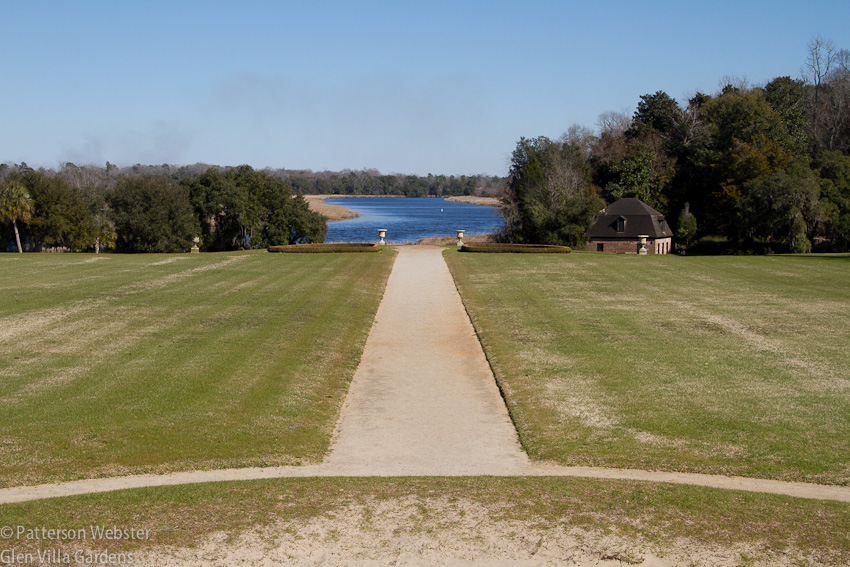
The central axis of the garden runs through the house, down to the Ashley River some 40 feet below. Taking this photo, I was standing on what once was the central hallway of the family house.
This central axis forms one line of a right-angled triangle. The second line of the triangle runs through a canal called The Reflecting Pond. Le Nôtre’s influence is immediately evident at this point. While smaller and less impressive than its predecessor at Vaux-le-Vicomte, this canal, 800 feet long and 100 feet wide, nonetheless reflects his work and establishes both the structural and historic credentials of the garden that exists today.

A canal similar to one at Vaux-le-Vicomte in France is the first thing encountered by today’s garden visitors.
The hypotenuse, the third side of the triangle, passes through the central points of three geometrically designed garden areas, the Mount, the Sundial Garden and the Octagonal Garden, seen below.
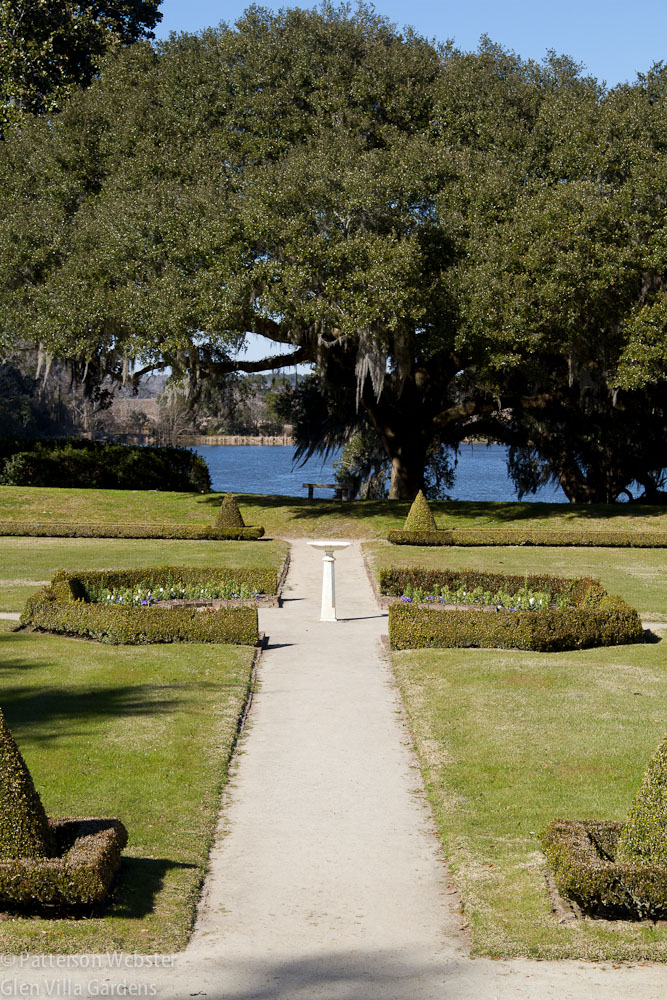
The octagonal garden at Middleton Place is one of three gardens laid out on the hypotenuse of the great 45/45/90 degree triangle that is central to the overall plan of the garden. It once served as a bowling green.
Nearby stands the statue of a young woman adjusting her sandal, a rare survivor of the extensive collection of statuary that once decorated the garden.
Water plays a significant role at Middleton Place. It was vital to the economic life of the plantation, where rice, cotton and indigo were the primary crops. Its use in a fanciful design accounts for the most famous aspect of Middleton Place’s landscape, the Butterfly Lakes.
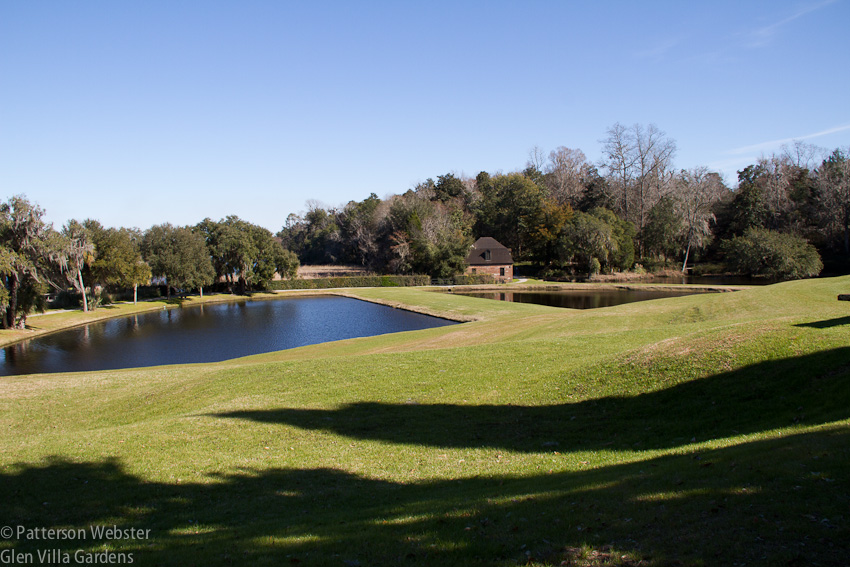
The shape of these artificial lakes is clearest from an airplane. From ground level, the butterfly wings are not as obvious.
I have seen many photographs of the lakes and the terracing and was expecting terraces that were larger and more clearly defined. Perhaps at some point in the past they were, but today the terracing is gentle, almost a suggestion of itself.
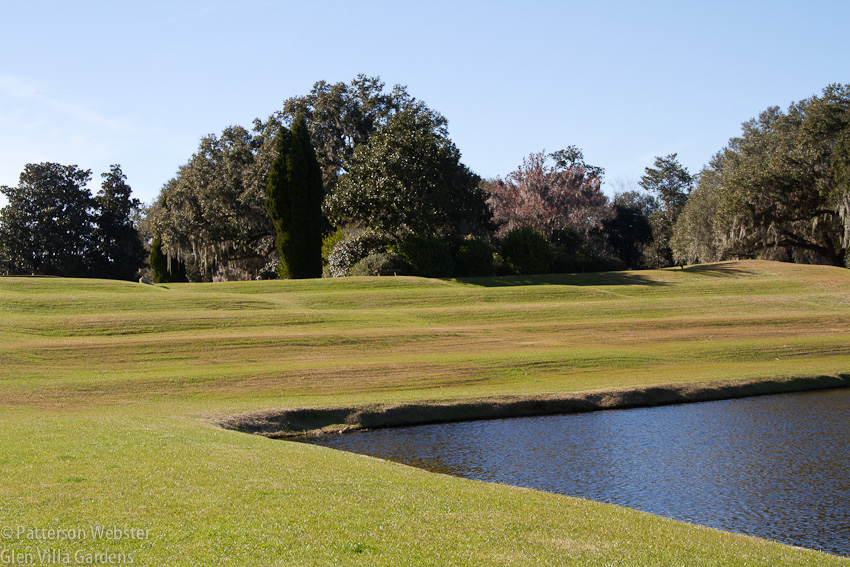
The contours of the terraces are visible when looking up the hill. Perhaps at other times of the day shadows may make them appear more clearly.
The formality that characterizes the garden persists. The north gardens are laid out in a grid, with each section surrounded by hedges and separated by walkways that reflect the structure of the original design. Alleés that once were trimmed into green walls now form shady tunnels that must provide welcomed relief from the hot summer sun.
The formality of the garden was diluted during the 19th and 20th centuries when romantic elements were added. Some of these are delightful, even out of season. I like the pierced brick wall that adds drama to the play of light and shade, although I don’t know if it was part of the original design or added later, perhaps when J.J. Pringle Smith, a direct descendant of Henry Middleton, inherited the property. In the early 20th century, he and his wife Heningham spent fifteen years restoring and enhancing the gardens. Their work was recognized in 1941 when the Garden Club of America named Middleton Place “the most interesting and important garden in America.”
History persists at the Middleton Oak, a massive live oak tree (Quercus virginiana) that adds a note of informal dignity to the formal spaces.
But in a garden history is not the be-all or the end-all. Statues of the Four Seasons that decorate one of two Secret Gardens may be traditional but they do not in themselves add interest to an otherwise bare and boring area. (The lack of interest could be a function of the season, but I doubt it.)
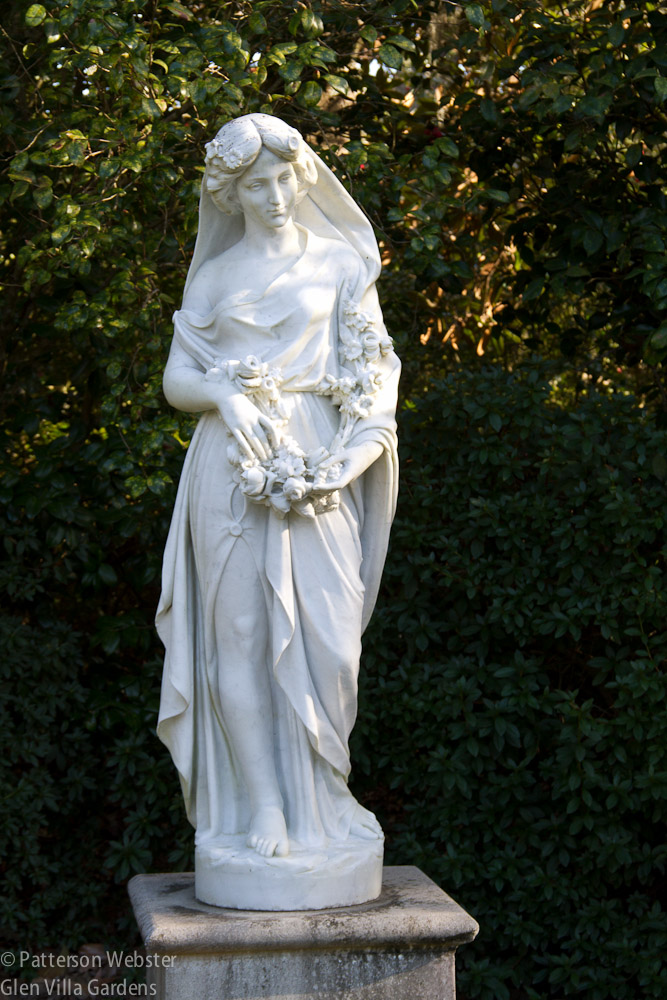
In every season, Spring stands in one corner of this garden room. The other seasons are in the other corners. A newly planted tree stands in the centre of the space.
The swans on the canal are clearly a recent addition designed to elicit oohs and aahs. As they did.
or in bloom.
This faded beauty appealed to me more than the gaudy red and pink camellias that were blooming elsewhere. I liked the colour, the soft beige of old age that connected it to glory of the past.
Can it be possible that beauty isn’t found only in perfection? Or only in the young?


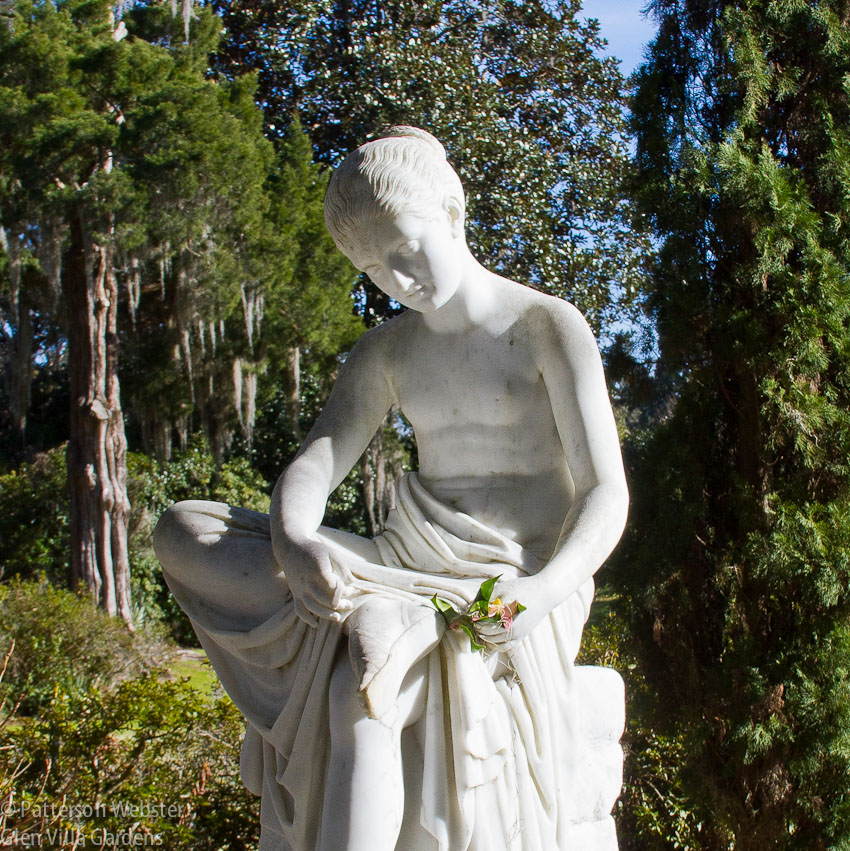
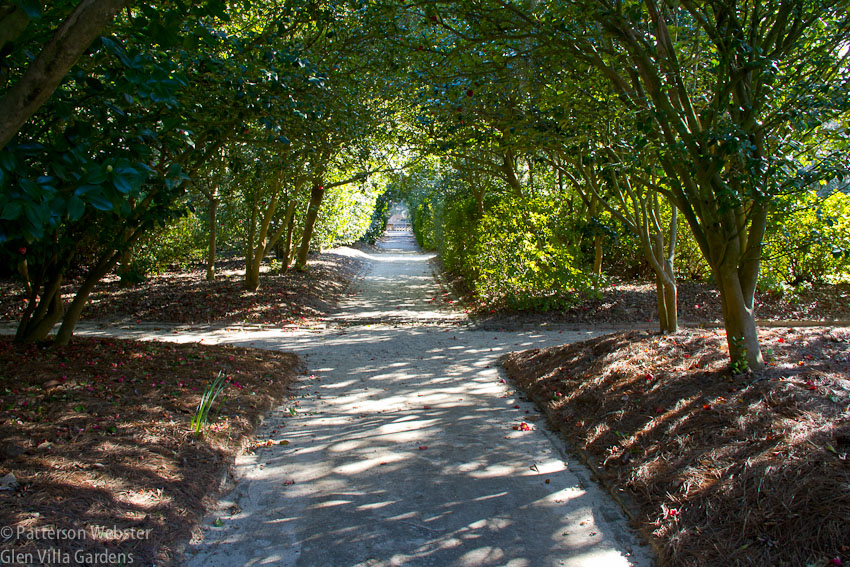
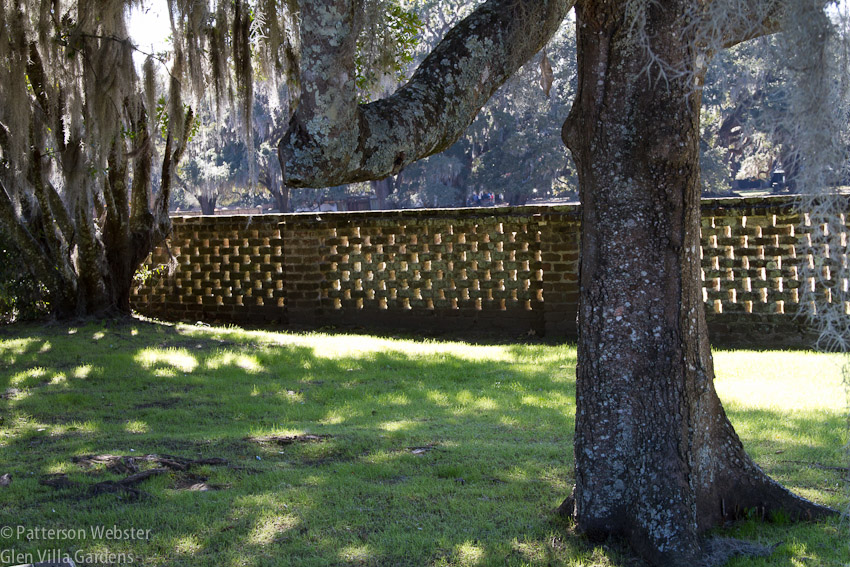

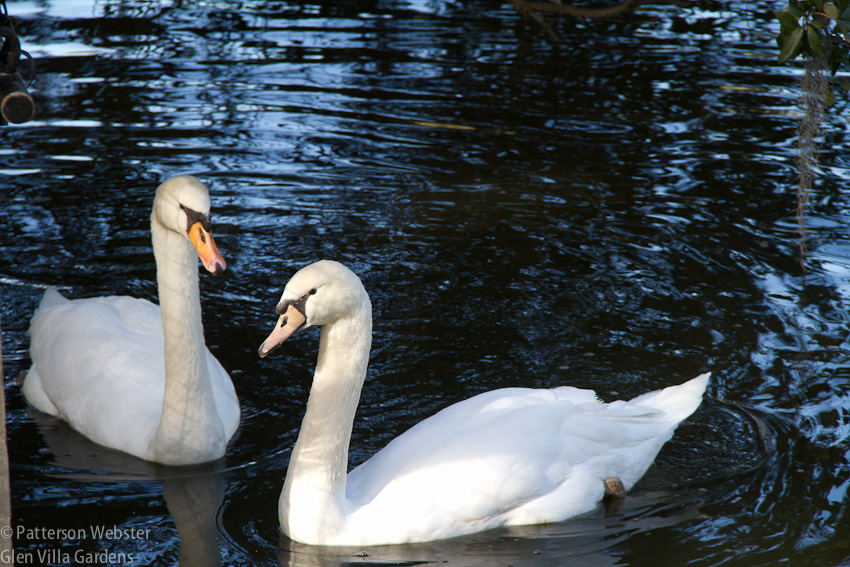
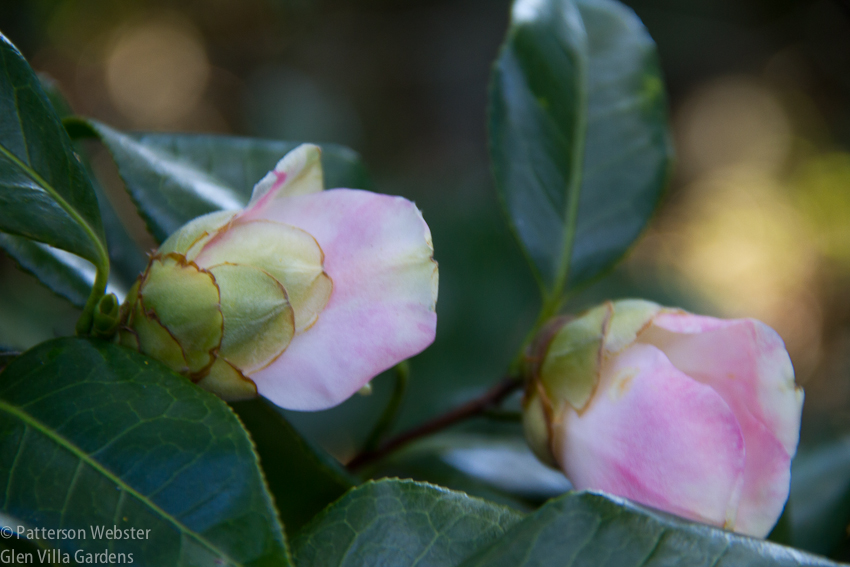
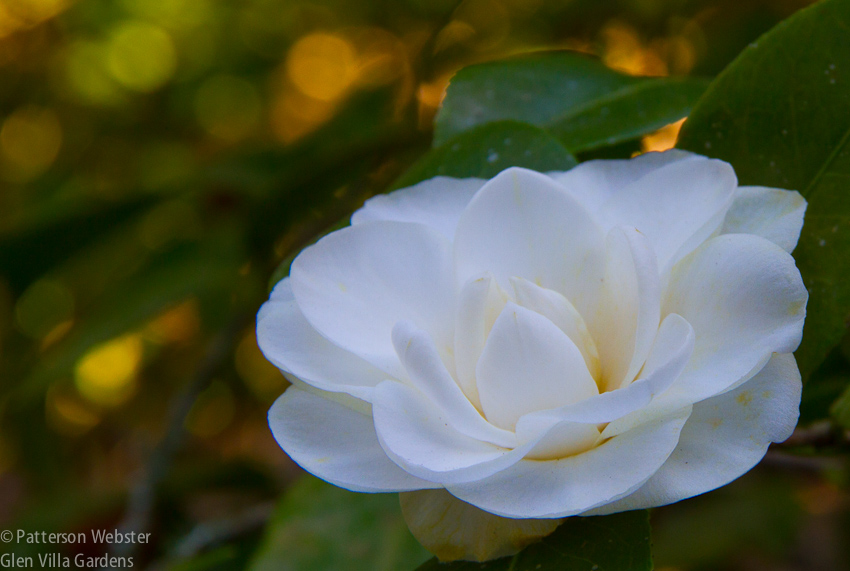
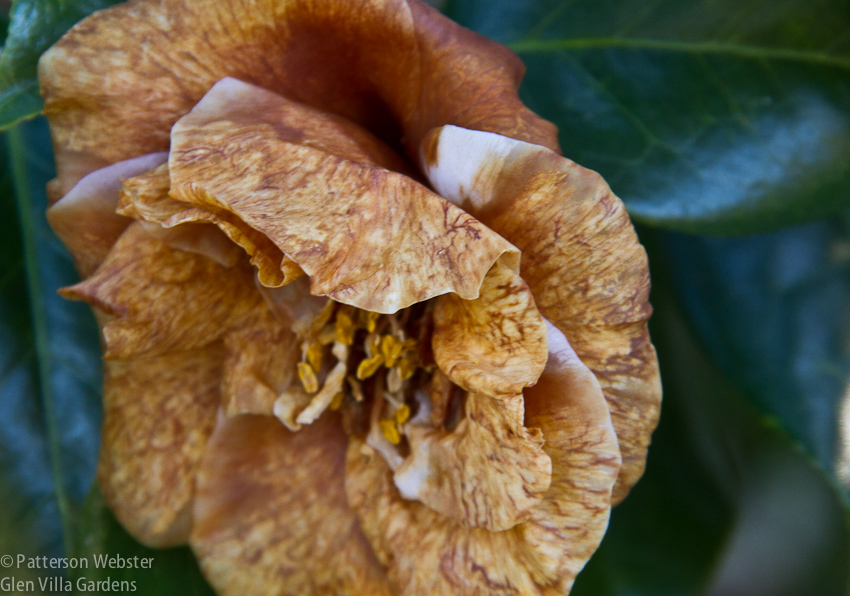




Enjoyed this! How would you like to take on the 7,000 acres?
You know me, Robert. I’m ready for almost anything. But 7,000 acres???
What a beautifully written blog. I hadn’t thought about Camellia looking plasticy, but now you say it… I guess, as with most plants, it somewhat depends what it is planted with, whether that look is offensive or not. One thing is for certain, beauty is not just found in perfection – in fact (as I get older!), I am much more attracted to imperfection. What does that say, I wonder?!
Imperfection is my ideal, Janna! I agree about plant combinations. Yesterday I saw a camellia planted with other things — didn’t take time to examine the combination closely enough to identify anything — and liked it better.
Looks like you had a pretty day, at least. To get the full sense of Middleton, you must imagine it in summer with heat, humidity, and mosquitoes. But I love it.
It was a good day, Marian. I really enjoyed the day and the place and want to go back to get a better feel for it. But not while the weather is so cold! (Loved your ice photos but feel sympathy for you and your garden.)
It’s always reassuring to remember that there is a lot of Garden History in the USA as well as Europe, Asia and the rest of the world.
I’m increasingly aware of how rich American garden history is. The time frame is shorter but there is very interesting diversity.